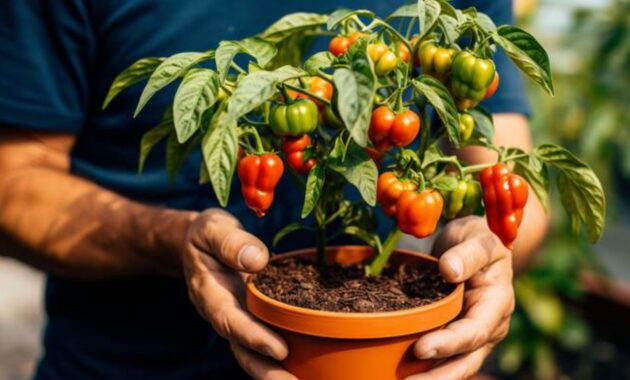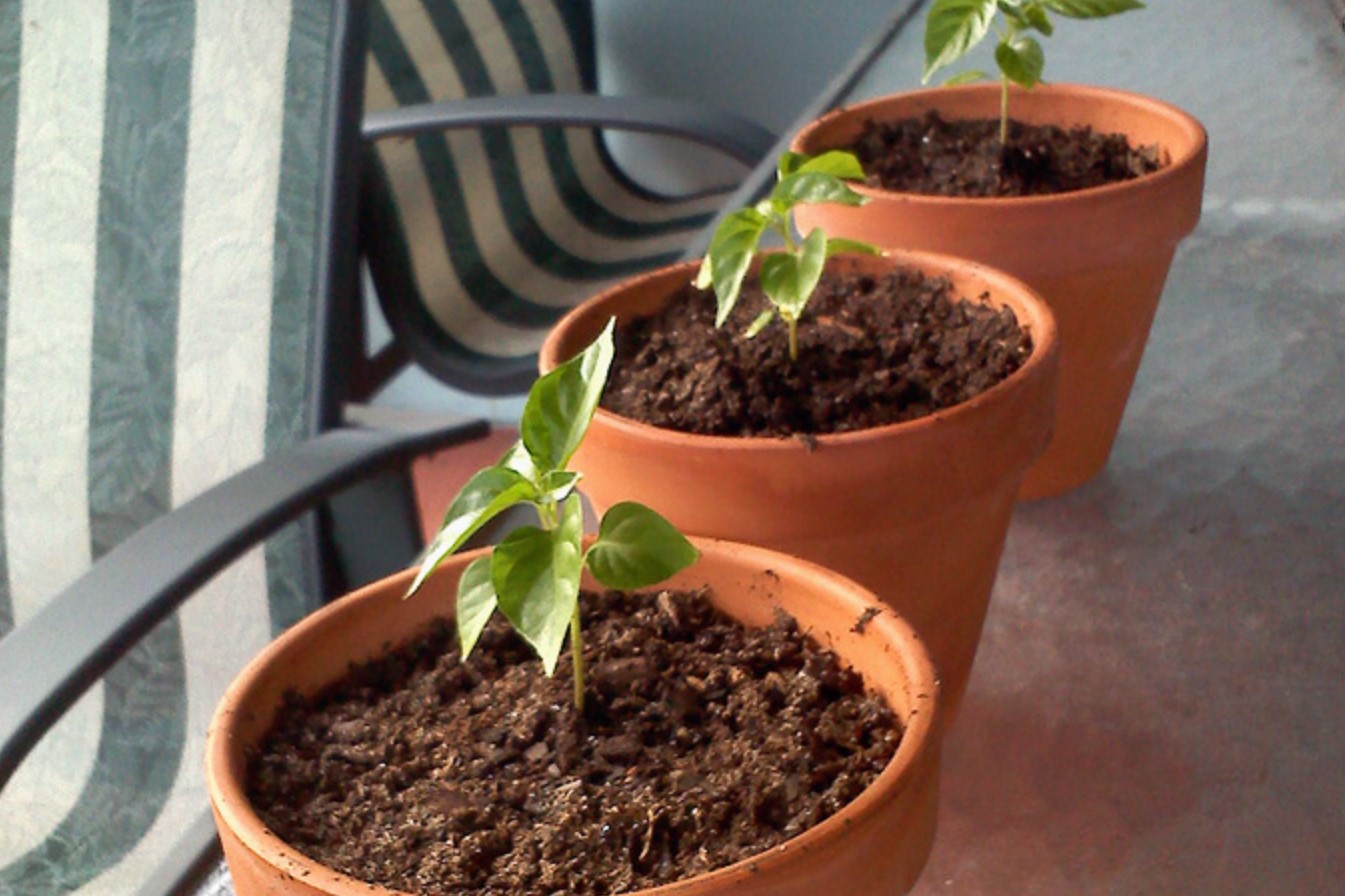
The habanero pepper is one of the hottest and most famous chili peppers in the world. Known for its intense heat and fruity, citrusy flavor, it’s a favorite for those who love spicy food. This small but mighty pepper is widely used in hot sauces, salsas, and spicy dishes that need a serious kick of heat.
Key Characteristics of Habanero
| Feature | Description |
|---|---|
| Scientific Name | Capsicum chinense |
| Common Names | Habanero |
| Origin | Amazon region (Peru, Colombia), Mexico |
| Heat Level | 100,000–350,000 Scoville Heat Units (SHU) |
| Size | 1–2.5 inches long, lantern-shaped |
| Color | Green (unripe), turns orange, red, or even white and brown when fully ripe |
| Plant Type | Annual in temperate climates, perennial in tropical climates |
Heat and Flavor Profile
The habanero is famous for its extreme heat but also its complex flavor. While many associate it only with spiciness, habaneros have a distinctively fruity, floral, and slightly citrusy flavor that balances their heat.
- Scoville Heat Units (SHU): 100,000–350,000, making it significantly hotter than a jalapeño (which ranges from 2,500–8,000 SHU).
- Flavor: Fruity, slightly sweet, with tropical notes of citrus and a floral aroma.
Growing Habanero Peppers: A Step-by-Step Guide
1. Location and Climate
Habanero peppers thrive in warm, sunny climates, with temperatures between 70°F and 95°F (21°C to 35°C). They need full sunlight—at least 6-8 hours of direct sunlight per day.
- Ideal Growing Zones: USDA zones 10-12 are ideal for outdoor growth. In cooler regions, they can be grown in containers and moved indoors or in a greenhouse.
2. Soil Requirements
Habaneros need rich, well-draining soil. They prefer slightly acidic to neutral soil with a pH of 6.0 to 6.5.
- Fertilizing: Use a balanced fertilizer during the growing season, especially when the plants start to flower and produce fruit.
3. Planting Habanero Seeds
- Starting Indoors: Since habaneros need a long growing season (90-120 days), start seeds indoors 8-10 weeks before the last frost.
- Transplanting: Once the seedlings have several true leaves and the weather is consistently warm, transplant them outdoors, spacing them 18-24 inches apart.
4. Watering and Maintenance
Habanero plants need regular watering, but avoid waterlogging the soil.
- Watering: Keep the soil consistently moist but not soggy. Overwatering can lead to root rot.
- Mulching: Mulch around the base of the plants to help retain moisture and keep the roots cool.
5. Pests and Diseases
Common pests for habanero plants include aphids, spider mites, and whiteflies. These can be controlled with insecticidal soap or neem oil. Watch for blossom end rot, which can occur if plants do not receive enough calcium or water.
Harvesting Habaneros
Habanero peppers are ready to harvest when they turn from green to their mature color, which is typically bright orange or red, although some varieties can be white, brown, or even purple.
- How to Harvest: Cut the peppers from the plant using scissors or a knife, leaving a small portion of the stem attached to each pepper. Be careful not to bruise the delicate peppers.
- When to Harvest: Depending on the variety, it takes about 75-100 days from transplanting for the peppers to mature.
Culinary Uses of Habanero Peppers
Habaneros are incredibly versatile in the kitchen, especially for those who love spicy foods. They are used fresh, dried, or cooked in a wide range of dishes and sauces.
1. Hot Sauces
One of the most popular uses for habaneros is in hot sauces. Their fruity flavor and intense heat create the perfect base for bold, spicy sauces.
- Habanero Hot Sauce: Combine habaneros with vinegar, garlic, and lime juice to make a fiery, tangy hot sauce.
- Mango-Habanero Sauce: The sweetness of mango complements the heat of habanero peppers, making a delicious sauce for chicken or fish.
2. Salsas and Relishes
Habaneros can be used to spice up salsas and relishes. They add both heat and a unique tropical flavor.
- Habanero Salsa: Combine diced habaneros with tomatoes, onions, cilantro, and lime juice for a spicy salsa.
- Habanero Relish: Mix finely chopped habaneros with onions, vinegar, and sugar for a sweet-and-spicy relish perfect for sandwiches or tacos.
3. Dried and Ground Habanero
Habaneros can be dried and ground into powder for use as a spice.
- Habanero Powder: Dried habanero powder can be sprinkled on dishes for a boost of heat. Be cautious, as a little goes a long way!
- Habanero Flakes: Similar to crushed red pepper flakes, dried habanero flakes are a great addition to pizza, soups, or stews.

Health Benefits of Habanero Peppers
Habanero peppers are not only a fiery addition to your meals but also offer numerous health benefits due to their high content of vitamins and capsaicin.
- Capsaicin: The compound that gives habaneros their heat, capsaicin, has been shown to have anti-inflammatory and pain-relieving properties. It also boosts metabolism and may help with weight loss.
- Rich in Vitamins: Habaneros are an excellent source of vitamin C, which boosts immune function, and vitamin A, which supports eye health.
- Antioxidants: Habaneros are packed with antioxidants, which help protect the body from free radicals and reduce the risk of chronic diseases.
Fun Facts About Habaneros
- Name Origin: The name “habanero” comes from the city of Havana in Cuba, although the pepper is more commonly associated with Mexico’s Yucatán Peninsula.
- Record-Breaking Heat: While not the hottest pepper in the world, the habanero was once considered the hottest chili pepper before super-hot varieties like the ghost pepper and Carolina Reaper were discovered.
- Color Variations: While orange and red habaneros are the most common, they also come in colors like white, brown, and purple.
Conclusion: Why Grow Habanero Peppers?
Habanero peppers are a great addition to any garden if you love spicy food. Not only do they add intense heat to dishes, but they also provide a fruity, complex flavor that enhances salsas, sauces, and more. With the right care, habaneros are relatively easy to grow and can reward you with a fiery harvest all summer long.
Whether you’re making a hot sauce that packs a punch or drying the peppers for long-term use, habaneros bring bold flavor and a powerful heat that spice lovers crave!



